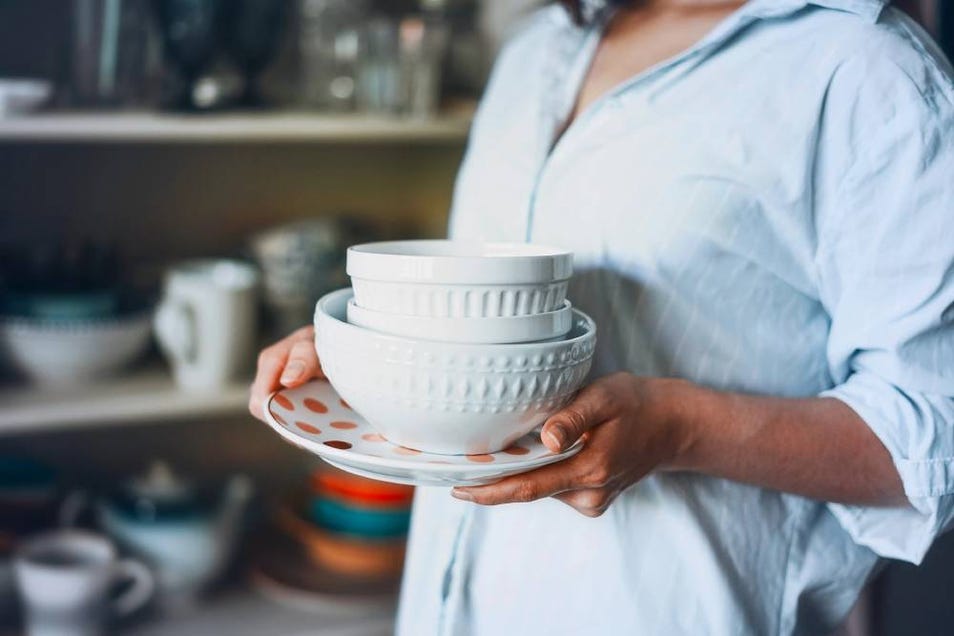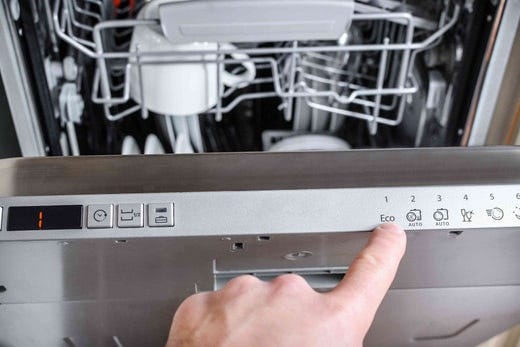
6 Reasons Your Dishwasher Tablets Are Not Dissolving
Your dishwasher machine is one of the most useful home appliances. It allows you to clean up after meals, parties, or any other event effortlessly.
At times, you might sometimes notice soap residue or foam accumulation in there even if you use the best quality tablets. This soapy residue is from improperly dissolved dishwasher tablets.
You need to investigate what is wrong and start working on the problem to avoid any possible damage. Let’s explore how we can avoid this issue and utilize the full potential of dishwasher tablets, such as Finish dishwasher tablets.
How A Dishwasher Works?
Before fixing a problem, you need to acquire complete knowledge of the process that’s going behind it. In this case, we must develop an understanding of the working process of a dishwasher.
A dishwasher cleans your dishes by mixing water and detergent using high-pressure washer jets. Washer jets eliminate the need to scrub the dishes.
The rotating dishwasher arms spray hot water from the washer jets, which allows the cleaning of the dishes, and hot water dissolves the detergent.
During the wash cycle, the detergent door opens at a pre-established moment, dropping the tablets at the bottom of the dishwasher, where they dissolve. This lather-rich water will suck into the drain before being pumped into the spinning arms and through the washer jets. The rinse cycle begins after the wash cycle. There is also an option of steam drying in some machines after the rinse cycle.
Additionally, you should also know about mistakes to avoid while using dishwasher tablets. With this knowledge of the working of a dishwasher, we can now discuss why dishwasher tablets might not dissolve fully.
6 Reasons Why The Dishwasher Tablets Are Not Dissolving
1. Dishwasher pods getting stuck
It is essential to keep the detergent dispenser area clean. Any food particles or detergent residue might cause the dishwasher tablets to stick.
Keep the dispenser tray dry before putting the dishwasher tablets inside, as the moisture will cause the tablets for dishwasher to clump together.
Load the detergent just before the wash cycle. Keeping the detergent for too long will cause it to clump or stick together, which prevents proper dissolving.
2. Damaged dispenser
The problem could be with the dispenser as well. If the door is not opening as it should, the detergent may not release immediately, preventing it from dissolving completely and stopping you from utilizing the full benefits of dishwasher tablets.
3. Problem with the spray arms
The spray arms might not be working properly. Due to which, an adequate amount of water will not be distributed throughout the dishwasher, leading to incompletely dissolved dishwasher tablets.
The spray arms need to rotate properly for efficient cleaning of the dishes and for the detergents to dissolve properly.
Investigate any cracks or other damage to the spray arms. Look for any food particles or soap residue blocking the nozzle. Clean the nozzles thoroughly to clear the blockage.
4. Low water pressure
It is unlikely that the dishwasher tablets dissolved and your dishes cleaned properly if the machine's water pressure is too low. Ensure that the inlet pipe is not damaged.
If you are unable to fix the problem, consider calling a professional.
5. Low water temperature
Another potential cause for your dishwasher tablets not dissolving is inadequate water temperature. Hot water ensures that the dishwasher tablets dissolve properly. Run the cycle at a higher temperature to check if it works. If the problem is not solved, we recommend you call an expert.
6. Blocked detergent door
It is important to ensure that the detergent door is opening properly and not blocked by things like large pots and pans. If the detergent door doesn't open properly, your dishwasher tablets will not be dropped at the bottom of the dishwasher, preventing them from being dissolved completely.
Users need to know enough about their machine to avoid unwanted hassle. Use Finish dishwasher tablets to achieve best results.
.png?width=70&height=45&format=png&quality=50)

